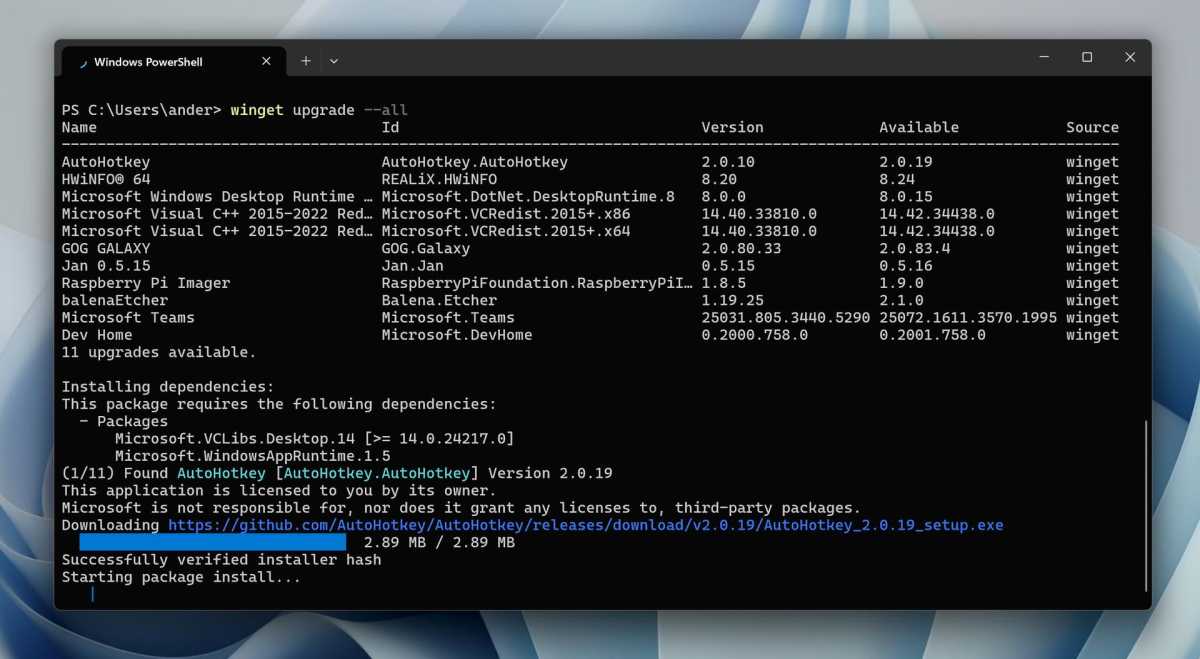Windows Terminal
Windows 11 and later updates of Windows 10 have a new and more modern program for control via text commands. It’s basically a shell for the old Command Prompt and Powershell, and you can open tabs with both to access unique commands that only exist in one or the other.
In everyday computer use, there may not be much to do in Terminal, but it can be very handy to know how it works. For example, there are system settings that can only be made from here, and it is often easier to add or change in the Windows registry.
However, there is one feature that even a regular user can benefit from in everyday life: the ability to install, update, and uninstall programs. The system has a built-in tool called Winget that is used for everything in the Microsoft store. For other programs and terminal commands, there are several third-party options, such as Chocolatey.
For example, here’s how to install Microsoft Powertoys for your user account. Type the command and exit with return:
winget install Microsoft.PowerToys -s winget
If you type just winget and hit return, you will see a list of available features. If you add –help (should be double hyphen-minus), the help file for a particular feature will be displayed — for example, winget install –help for info on how to use the install feature. If you want to install a program for all users on your computer, you can add –scope machine after install.

Foundry
You can also update installed applications via Winget instead of having to launch the application and check for updates. Type the following command followed by return to update all installed applications for which Winget finds updates:
winget upgrade –all –silent
For applications that require admin privileges to install/update, you will need to approve each update, but you can bypass this by running Terminal as administrator.
Chocolatey is a package manager similar to ones you may have seen on Linux. It’s a bit more complicated to install, so if you’re curious, I recommend reading the developers’ instructions.




